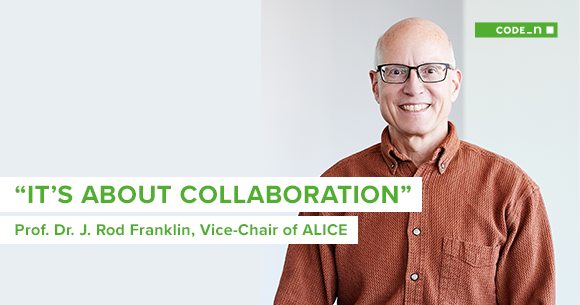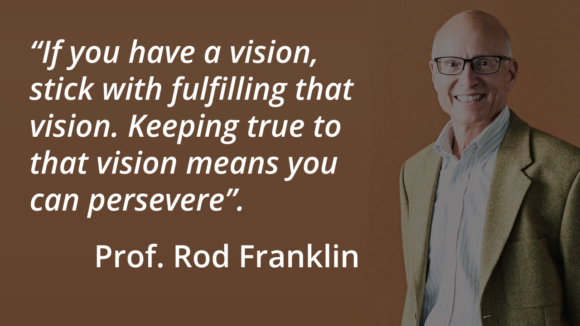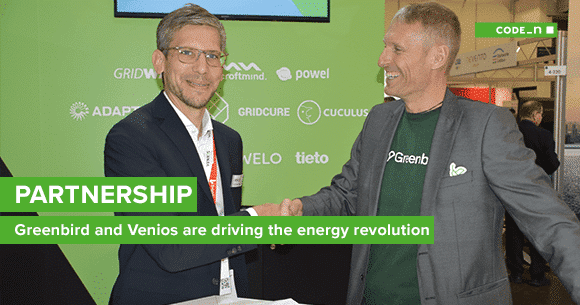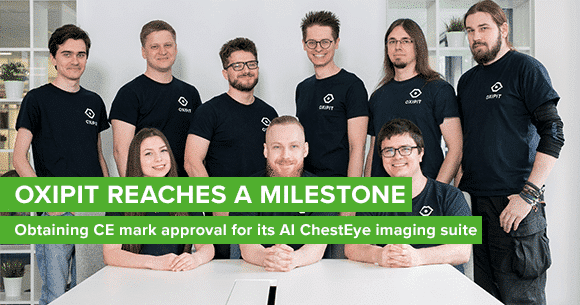Guest feature | Transmetrics interview on Physical Internet shaping the future of global logistics
It’s an exciting time to be a part of the logistics industry. Innovation in the space has never been greater with new technologies like driverless trucks, artificial intelligence, delivery drones, smart infrastructures, collaborative platforms, and the industrial internet of things transforming the global logistics supply chain. Finally, an industry once criticized for being slow to embrace new ideas is getting recognized as the leading edge of how technology can solve real-world problems.
A great example of this is an initiative being pioneered by Prof. Dr. J. Rod Franklin known as the Physical Internet. It’s an idea focused on the physical realization of the digital internet to create an open global logistics system of physical, digital, and operational connectivity that will change how goods are moved anywhere in the world. As futuristic as the idea may be, according to Prof. Dr. J. Rod Franklin, it’s not a lack of technology that’s preventing the Physical Internet from becoming a reality today. What’s needed is a new mindset by the players in the industry.

To learn more, Transmetrics’ Co-Founder and CCO Anna Shaposhnikova spoke with Prof. Franklin about his experience, thoughts on technology, and how the concept of the Physical Internet will shape the future of global logistics. As Vice Chair of the Physical Internet Initiative Under Alliance for Logistics Innovations through Collaboration in Europe (ALICE), as well as his 30+ years in the logistics industry, give him a unique and credible perspective on these ideas.
Anna: You have had a broad range of experience in the field of logistics, what is it about this less thanexciting industry that has kept you interested so many years?
Professor Franklin: The thing that attracted me about logistics was that when I began it was not very sophisticated but should have been. The tools were there – the capabilities and technologies – but the industry was mired in the past. It looked to me like an industry with a lot of potential for the future but was being ignored because it was not sexy. So, I thought combining my technical background with what was going on in the industry would create the potential to move it forward in a very positive fashion.
Anna: Would you say that the logistics industry is in better shape in terms of innovation today and it has become ‘sexier’ over time?
Professor Franklin: That depends. If you look at disruptive start-ups, then yes, it is starting to be. But if you look at the traditional companies, most are still stuck in the old way of doing things. It is an industry fairly open to disruption. The players who have been historically strong could conceivably adopt the tech of the start-ups and begin to be their own disruptors, but there will also be new disruptors who could gain traction and replace the traditional players who do not evolve. I would say that the industry is in a transition zone between old and new.
“I would say that the logistics industry is in a transition zone between old and new.”
Anna: We all know that logistics industry is very conservative and can be slow to welcome new innovation. Why is the cargo transport industry as a whole so resistant to the adoption of new technologies compared to other industries like banking or pharmaceutical?
Professor Franklin: It’s for two reasons. One is historically the people who have participated in the industry have been what I call operators – their job has been to execute things. They are not as concerned about ways they might change how they do their execution but they rather do it as they’re used to. So, they do things just as they were taught through academia and early in their careers with no real desire to change. There’s also another reason. The industry has been looked at from the shipper perspective as an unnecessary “evil” cost they would like to reduce to the very bare minimum. This has also forced the operators to be more efficiency-focused and not technology or next generation focused. So they haven’t had enough spare money to think about how they might change.

Picture Credit: Betanews.com
Anna: From your point of view as an academic and a practitioner with broad experience in this area, what will be the role of big data, and predictive analytics for the logistics industry?
Professor Franklin: You can look at some very strong examples – yourself [Transmetrics] as one. But another good example is Amazon doing predictions for how new products are going to sell, where they’re going to be popular, the types of individuals that will buy them, and then prepositioning products to respond immediately to those predicted demand profiles. Those types of things are the future of the industry. If we can’t figure out how to use that huge amount of data then we’re going to be sadly served by the Internet of Things and where digitization is going.
Anna: Do you think the industry is awakening to the importance and opportunity of this type of digitalization and big data?
Professor Franklin: I think the big players are beginning to awaken to the idea, but the vast majority of the industry are not the big players. This is a highly disaggregated industry. If you try to add up the revenue of the top 10 logistics service providers you’d find that you’re still talking about a very low double-digit percentage of total spend at best. So there are still the vast majority of companies which are aware of the change but not doing anything about it.
“There are still the vast majority of companies which are aware of the [digital] change but not doing anything about it.”
Anna: I agree, our analysis identified that the 5 top logistics suppliers are only about 7% of the total EU market in terms of revenue. So it’s indeed a very fragmented industry. What would be your advice to medium-sized players? They are not part of the top players who can afford to take the steps towards digitalization and using big data. How can they maintain competitiveness?
Professor Franklin: Well they may be left behind for sure, but I think a number of young startups like Transmetrics are trying to provide them with services that are leverageable. That sort of services that they can buy by the drink, if you will, as opposed to having to invest tons and tons of money. And I think that those types of efforts by some of the new startups in the industry will help these middle tier companies to at least begin to see the benefits of participating in this digital future.
“A number of young startups like Transmetrics are trying to provide the middle-sized companies with services that are leverageable without them having to invest tons and tons of money.”
Anna: Speaking of innovation and disruption in the logistics industry, how did you come to the idea of the Physical Internet?
Professor Franklin: The idea of the Physical Internet is a logical convergence of all the innovative things going on in the industry. So when we start talking about collaboration, autonomous vehicles, smart infrastructures, the instrumentation of everything, standardization of containers for faster movements between modes – all of these things have a logical end point. And if you think about it abstractly it looks very much like the digital internet. So why not believe the Physical Internet would develop and operate the same way the digital internet does?
Anna: How long do you think will it take for logistics players to become part of the Physical Internet?
Professor Franklin: Logistics providers are ready whether they believe it or not. All companies can already link to one another with cloud technology, platforms, and instrumentation. These things have created the opportunity for them to participate in what will become the Physical Internet. It is a natural process. However, there is one thing that is missing from this process. When we look at the start of the digital internet, it was basically a peer to peer internet. It linked together networks but there were no control mechanisms to properly handle the flow of information. This didn’t occur until the development of TCP/IP (set of communications protocols). Similar control mechanisms still need to be developed for the Physical Internet. This will take time in the future before we are going to realize this physical implementation of the digital internet.
Anna: What changes are needed to be made among the logistics players to make it a reality? Is it more on the technology side or we are talking about changing the mindset?
Professor Franklin: It’s a good question. It’s not the technology. I have always said that the technology is there. That part is all just programming, building chips, and processing capabilities. What’s not there, and what is a necessity, is the mindset of collaboration. Everyone today wants their own warehouse, trucks, ships, etc. When you look at the industry and how much of those assets are efficiently used, it’s a small amount. So when transporters learn to collaborate and build business models based on sharing their assets then we will start moving to a world where Physical Internet can exist.
“When transporters learn to collaborate and build business models based on sharing their assets then we will start moving to a world where Physical Internet can exist.”
Anna: As you already mentioned the industry is very fragmented. The existing players feel they need to fight for every customer. That’s not a good environment that fosters sharing, how will that mindset be overcome?
Professor Franklin: Change will have to start at the local, grassroots level. For one, cities are starting to force sharing. After time companies will see it’s not so bad to share things. City-based logistics is where money will be made in the future, this will lead to more sharing. Regulatory bodies will need to force change in cities because there are other incentives to improve how intra-city logistics operate – noise and pollution are big problems too.
Anna: Coordinating this beyond individual cities could be hard. We are talking about decisions that need to happen at a country level or higher. If we are talking about Europe, that decision will ultimately be made at the EU level and approved by all members. This is a difficult mission.
Professor Franklin: Maybe, but the digital internet started organically, locally, then eventually the world became connected. Cities will do the same thing with the Physical Internet. There are international groups of Mayors who talk with one another. Then over time, those organic projects will begin to connect to each other. If you look at large markets like Europe, the US, and Asia – China could be the first to adopt the idea. That’s a country with horrible traffic problems in its cities. Also, the political climate in China may be more conducive compared to the EU and the US which may make it easier to apply the necessary regulations to realize the Physical Internet.
Anna: You mentioned that the Physical Internet might be first adopted and regulated at a city level which brings to my mind a rather intriguing part of your biography. You were Mayor of Del Mar, California. What lessons did you learn in that position? Would you say you did a better job compared to Clint Eastwood? ?
Professor Franklin: Well actually Clint Eastwood was Mayor of Carmel when I was a Mayor of Del Mar. So I got to meet Clint. We sat on a California Mayor Council together. I learned that it is important to always keep in mind what the objectives are for the community. So, when people come in with their own agendas, each must be put against what the larger community is looking to achieve. You can’t satisfy the personal agenda at the sake of the greater vision. All of us want for ourselves, but few weigh what’s best for the whole group. A clear vision of what the community has for itself in the future should guide everything. Unfortunately, most politicians follow a personal agenda which is often to the detriment of the population.
Anna: One last question, earlier you mentioned the importance of startups like Transmetrics helping to push innovation in the logistics industry, to improve its efficiency, to become greener. What’s your advice for them?
Professor Franklin: The advice is similar to what I learned as Mayor. If you have a vision, stick with fulfilling that vision and on activities that push that vision forward. Keeping true to that vision means you can persevere. I see too many young startups that begin with a clear vision, then muddy it up by running after everything because they’re afraid they will not get traction. After time, they lose sight of what they were looking to achieve. And I think that’ll be the key for Transmetrics and other companies. Remember what you are here for, what are you looking to achieve, and stick with that. One thing I remember from my time at Harvard is a quote from Michael Porter, “Strategy is as much about what you won’t do as it is about what you will do.”

Anna: Indeed. And again quoting Michael Porter, it’s all about “shared values”. So we shall keep them at all times, stay focused, and be persistent in our journey even if it seems to be taking too long sometimes.
Professor Franklin: Exactly. As the ancient Chinese proverb says, “All long journeys begin with small steps”.
Anna: Thank you very much, Professor Franklin! It has been an amazing interview and I am sure that our readers will find it insightful.






Write a comment